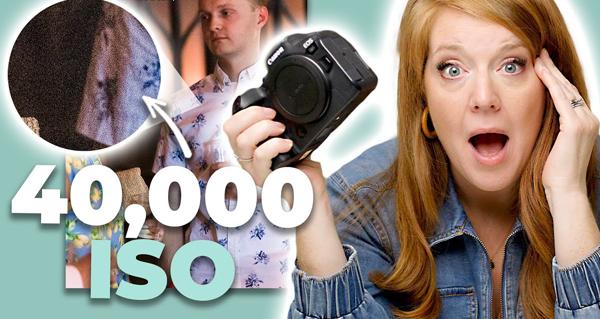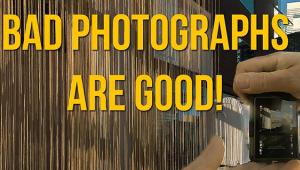This Pro Pushed ISO to 40,000: See What Happened! (VIDEO)

Today’s advanced digital cameras feature super high ISO settings that would have seemed impossible just a few years ago. So how far can you push the limit? Take a look and find out.
Katelyn James is a wedding and portrait pro based in Richmond, VA who recently photographed a large reception in a room she says was almost “pitch black dark.” It was a paid assignment that required her to capture great memories. She began by choosing an ISO setting of 40,000, and then she employed a few tricks to get the job done.
While ISO 40,000 may sound pretty close to the limit, James was shooting with a Canon EOS R6 full frame mirrorless camera boasting a native ISO range of 100-102,400—expandable to 204,800. The tips she provides in this episode, and the quality of her images, should be attainable with other high-end cameras.

Hopefully you’re never in a situation that calls for such extremes, but just in case you are, James says, “I want to share my experience to teach you and help you understand what’s possible.” To provide a clear idea of the extremely low-light James confronted, she kicks off the episode with a behind-the-scenes look at the dim conditions in the room.
After looking at that, you’re probably thinking “no way,” but then James moves to her computer for a look at the successful images she captured. As you’ll see, she employed a few tricks, like photographing guests by a nearby window. When shooting tables situated in the middle of the dark room, even the illumination from a single cellphone makes a big difference. And a little editing and noise reduction improved things further.
While watching this eye-opening episode you’ll realize how these high ISO tips will prove valuable for all kinds of low-light photography indoors and out. We suggest you visit James’ YouTube channel after viewing this interesting lesson, where you’ll find many more tips and tricks.

On a related topic, don’t missing another tutorial we posted recently explaining how aperture and shutter speed interact for the best photos possible under various conditions.
- Log in or register to post comments








































